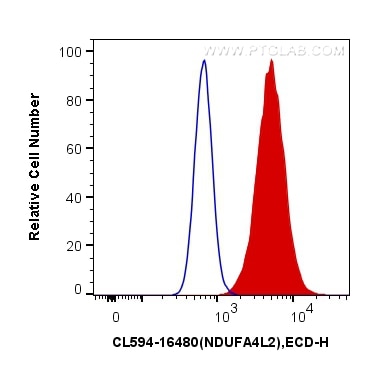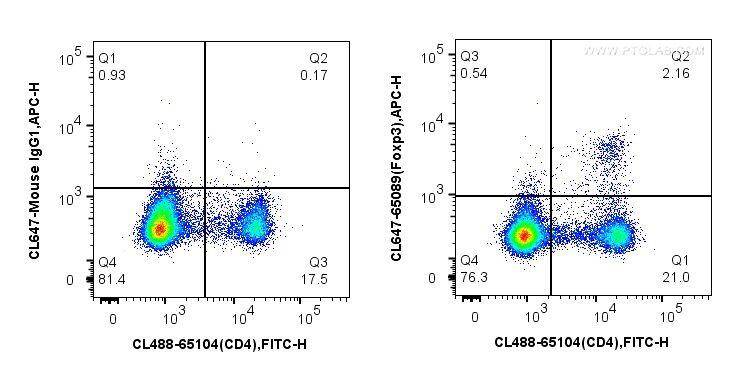- Featured Product
- KD/KO Validated
CoraLite®594-conjugated NDUFA4L2 Polyclonal antibody
NDUFA4L2 Polyclonal Antibody for FC (Intra)
Host / Isotype
Rabbit / IgG
Reactivity
human, mouse, rat
Applications
FC (Intra)
Conjugate
CoraLite®594 Fluorescent Dye
Cat no : CL594-16480
Synonyms
Validation Data Gallery
Tested Applications
| Positive FC detected in | HepG2 cells |
Recommended dilution
| Application | Dilution |
|---|---|
| Flow Cytometry (FC) | FC : 0.40 ug per 10^6 cells in a 100 µl suspension |
| It is recommended that this reagent should be titrated in each testing system to obtain optimal results. | |
| Sample-dependent, Check data in validation data gallery. | |
Product Information
CL594-16480 targets NDUFA4L2 in FC (Intra) applications and shows reactivity with human, mouse, rat samples.
| Tested Reactivity | human, mouse, rat |
| Host / Isotype | Rabbit / IgG |
| Class | Polyclonal |
| Type | Antibody |
| Immunogen | NDUFA4L2 fusion protein Ag9600 |
| Full Name | NADH dehydrogenase (ubiquinone) 1 alpha subcomplex, 4-like 2 |
| Calculated Molecular Weight | 87 aa, 10 kDa |
| Observed Molecular Weight | 10 kDa |
| GenBank Accession Number | BC011910 |
| Gene Symbol | NDUFA4L2 |
| Gene ID (NCBI) | 56901 |
| RRID | AB_2919833 |
| Conjugate | CoraLite®594 Fluorescent Dye |
| Excitation/Emission Maxima Wavelengths | 588 nm / 604 nm |
| Form | Liquid |
| Purification Method | Antigen affinity purification |
| Storage Buffer | PBS with 50% Glycerol, 0.05% Proclin300, 0.5% BSA, pH 7.3. |
| Storage Conditions | Store at -20°C. Avoid exposure to light. Aliquoting is unnecessary for -20oC storage. 20ul sizes contain 0.1% BSA. |
Background Information
NDUFA4L2(NADH dehydrogenase [ubiquinone] 1 alpha subcomplex subunit 4-like 2), also named as NUOMS, is a HIF-1α target gene that localizes to the mitochondria and belongs to the complex I NDUFA4 subunit family. It downregulates oxygen consumption and Complex I activity in hypoxia. NDUFA4L2 is involved in hypoxic adaptation by decreasing mitochondrial ROS production.
Protocols
| Product Specific Protocols | |
|---|---|
| FC protocol for CL594 NDUFA4L2 antibody CL594-16480 | Download protocol |
| Standard Protocols | |
|---|---|
| Click here to view our Standard Protocols |



